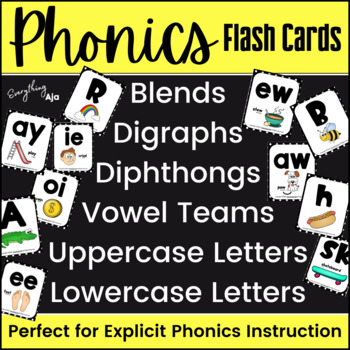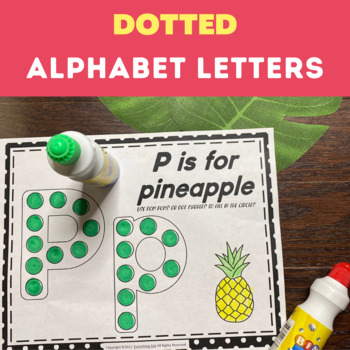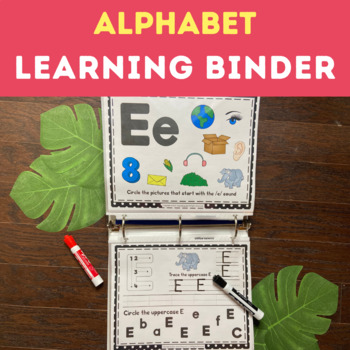Letter Recognition Mistakes: How to Avoid Common Errors in Teaching Letter Sounds
Feb 29, 2024By: Aja McNair
Teaching letter sounds is a crucial step in early literacy development. However, educators and parents often make some common mistakes that can hinder a child's learning progress. In this blog post, we will discuss these mistakes and provide solutions to ensure effective letter sound instruction.
Mistake 1: Rote Memorization
Teaching letter sounds through rote memorization involves asking children to repeat sounds without truly understanding their purpose. For example, holding up flashcards and asking, "What letter is this?" without connecting the sound to real words. This approach can hinder their ability to grasp letter sounds. To fix this, we recommend helping children understand the purpose of letter sounds by connecting them to real words. For instance, using objects or pictures that start with the same sound as the letter to provide context.
Flashcards can be an incredibly effective tool when teaching letter recognition to young learners, provided they are utilized in a creative and engaging manner. Rather than resorting to monotonous drilling, incorporating flashcard games can make the learning process fun and interactive. By infusing activities like matching games, scavenger hunts, or even storytelling with flashcards, children can develop letter recognition skills in an enjoyable and meaningful way. Some of my favorite flashcard games include "Letter Hunt," where children search for flashcards hidden around the room, and "Alphabet Memory," a classic matching game that reinforces letter recognition while boosting memory skills. When used thoughtfully, flashcards can be a valuable asset in the arsenal of educators and parents alike, fostering a love for learning and laying a solid foundation for literacy success.
Mistake 2: Teaching Letter Names First
Focusing solely on teaching letter names before letter sounds can confuse young learners. For instance, repeatedly showing a child the letter "T" without teaching them that it makes a "T" sound. To address this mistake, start with letter sounds as they are more useful in reading. Once children are comfortable with letter sounds, then introduce letter names. This approach can be implemented even at an early age, ensuring a smooth transition to letter recognition.
Mistake 3: Inconsistent Pronunciations
Inconsistent or incorrect pronunciations of letter sounds can hinder a child's reading progress and delay their reading process. For example, teaching "L" as "Luh" instead of "Ooh" can lead to confusion when blending sounds to read words. To rectify this mistake, it is vital for adults to pronounce letter sounds consistently and accurately. By ensuring this, children will be able to blend sounds correctly and read with ease.
Mistake 4: Skipping Vowels
Neglecting vowels while teaching letter sounds can create an imbalance in phonemic awareness. Both consonants and vowels are essential in building strong reading skills. To fix this mistake, give equal attention to both consonants and vowels. Introduce vowels as distinctive sounds and help children understand their role in forming words.
Mistake 5: Overwhelming Information
Introducing too many letter sounds at once can overwhelm young learners. Mastery should be prioritized over quantity. To rectify this mistake, introduce a few letter sounds at a time and allow children to practice and master them before moving on to the next set of sounds. Consistency and mastery are key in ensuring long-term retention and understanding.
Mistake 6: Lack of Multi-Sensory Activities
Children are hands-on learners, and relying solely on worksheets or flashcards for teaching letter sounds may not be effective. Incorporating multi-sensory activities such as songs and games can engage students with different learning styles. This approach not only enhances learning but also makes it more enjoyable.
Mistake 7: Ignoring Individual Pace
Every child learns at their own pace, and ignoring individual learning pace can hinder their progress. Some children may grasp letter sounds quickly, while others may require more time and support. To fix this mistake, recognize and accommodate individual learning paces. Be patient and provide individualized support to ensure optimal learning.
Mistake 8: Inconsistent Reinforcement
Teaching letter sounds infrequently or without regular reinforcement can hinder retention and understanding. Consistency is key in reinforcing letter sounds. Regular practice and reinforcement ensure that children retain the information and can apply it in their reading. Utilize resources like the "Reading by Design" kit, which provides effective multi-sensory activities and printable resources for teaching letter and sound recognition.
Mistake 9: Lack of Reading Integration
Connecting letter sounds to reading activities is crucial for children to understand the direct application of their knowledge in reading words and sentences. Incorporate letter sounds within reading exercises. For example, when teaching the letter "B," read books like "Brown Bear, Brown Bear" that reinforce the "B" sound and connect it to real-world experiences. This integration reinforces letter sound knowledge and enhances reading skills.
Mistake 10: Forgetting to Teach Blending
Teaching individual sounds but neglecting to teach children how to blend them together to form words can impede their reading progress. Once children are comfortable with individual sounds, introduce blending activities to demonstrate how letters come together to create words. This skill is crucial for reading fluency and comprehension.
By avoiding these common mistakes and following the recommended solutions, educators and parents can help children build a solid foundation in letter sounds and phonics. Effective letter sound instruction sets children up for success in reading and language development. Remember, it is essential to watch instructional videos and understand the correct letter sounds in order to properly implement these solutions. With the right approach, we can make letter recognition a positive and empowering experience for young learners.
Lessen your stress by downloading my FREE Activity guide that features 3 activities that you can use with any lesson, standard or skill. In this FREE ebook, you will also get my FREE School Charades Icebreaker game.







